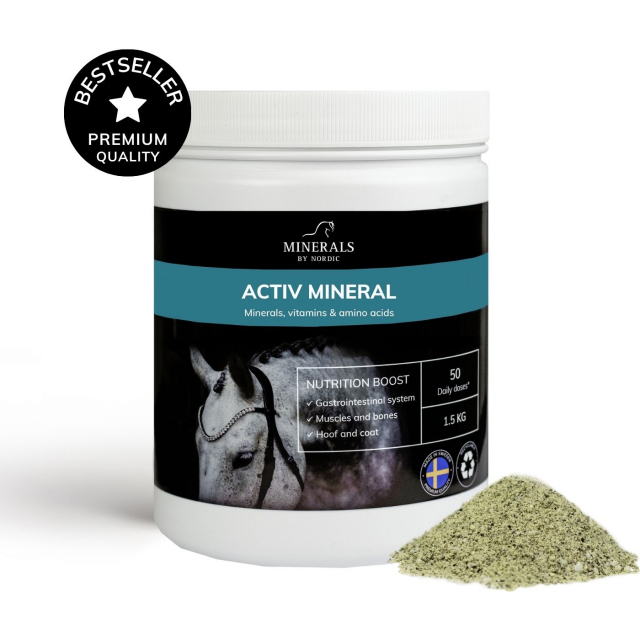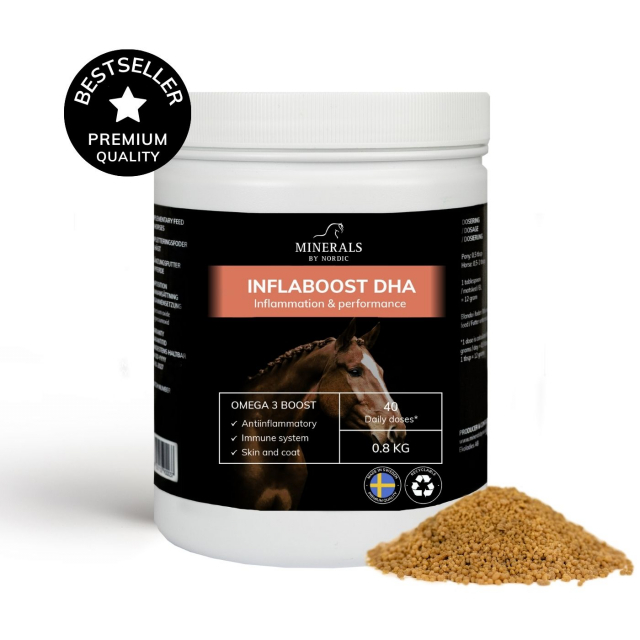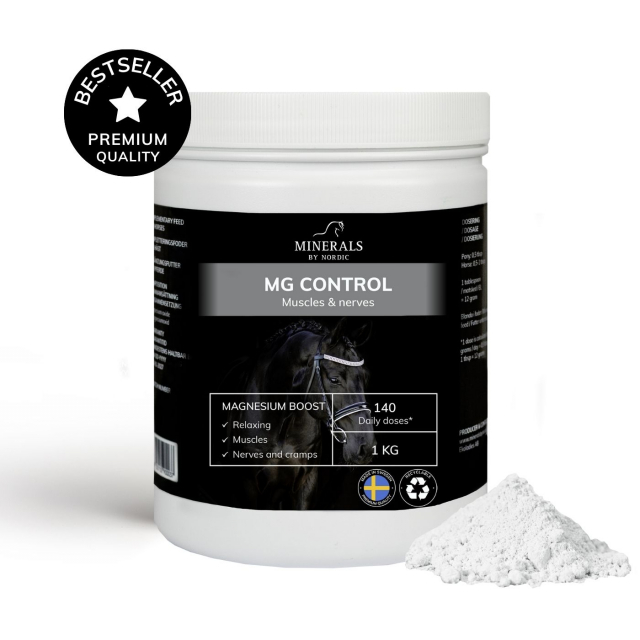Laminitis and EMS can be caused by various factors, including excessive intake of carbohydrates, high-sugar diets, metabolic diseases such as Cushing's disease, trauma, or infections. It is crucial that laminitis is treated immediately by a veterinarian to alleviate pain and prevent serious complications. Treatment may include pain relief, anti-inflammatory drugs, and adjustments to the horse's diet and environment to minimize the risk of recurrence.
Feeding tips for sugar-sensitive horses:
Activ Mineral: All horses require mineral supplements. Activ Mineral is free from sugar and grains.
Inflaboost DHA: Omega-3 fatty acids offer several health benefits for sugar-sensitive horses, including reduced inflammation and improved insulin resistance, which are vital for managing conditions such as laminitis and metabolic syndrome. They can also help maintain a healthy weight and promote hoof health, contributing to overall better health for the horse.
Mg Control: Magnesium supplements can help alleviate muscle tension and discomfort, while improving insulin resistance. It also plays a critical role in energy metabolism, supporting a healthy weight and reducing strain on the hooves. Additionally, magnesium is essential for strong bone and hoof structure by supporting calcium absorption.
Pur.Mash: Grain and molasses-free mash with prebiotics for gut support. If the horse does not require concentrate for energy, this mash is excellent to provide in a small dose for digestive support and is palatable for mixing feed supplements.
When should I seek veterinary care? You should seek veterinary care immediately if your horse exhibits any of the following symptoms of laminitis:
Limping or lameness: If your horse suddenly shows signs of limp or lameness, especially if it's more noticeable in one or more legs, it may be a sign of laminitis.
Increased pulse: If your horse's pulse is higher than normal without an apparent reason, it could be a sign of laminitis.
Stiffness or discomfort: If your horse appears unusually stiff or shows signs of discomfort, especially when walking or standing, it could indicate laminitis.
Reduced appetite: If your horse suddenly loses its appetite or shows reluctance to eat, it could be a sign that something is wrong.
Changed behavior: If your horse behaves unusually, such as being more easily irritated, listless, or nervous than usual, it could be a sign of pain or discomfort that may be associated with laminitis.
If you suspect that your horse has laminitis, it is important to seek veterinary care immediately for a proper diagnosis and treatment. The earlier laminitis is detected and treated, the better the chances for a successful rehabilitation and reduced risk of complications.
Rehabilitation for a Horse with Laminitis
Rehabilitation for a horse with laminitis is a crucial process aimed at promoting healing, alleviating pain, and restoring the horse's health and well-being. Below are some measures that can be included in the rehabilitation plan for a horse with laminitis:
Stall Rest: The horse should be placed in a clean and soft stall with ample bedding to minimize strain on the hooves and promote healing.
Hoof Care: Regular care of the hooves is crucial to maintain the health of a horse with laminitis. This may include trimming the hooves to correct any imbalances and support the healing process.
Pain Relief: The veterinarian may prescribe pain relievers or anti-inflammatory drugs to alleviate pain and discomfort for the horse.
Diet: A horse with laminitis may need a special diet low in sugar and starch to minimize the risk of recurrence and promote weight loss if necessary.
Exercise and Training: As the horse shows signs of improvement, light exercise and walking can help improve circulation and promote the healing of the hooves.
Continuous Monitoring: It is important to closely monitor the horse's condition and regularly communicate with the veterinarian to ensure that the rehabilitation plan is effective and any complications are detected and treated in a timely manner.
Rehabilitation for horses with laminitis is a long-term process that requires patience and careful attention to the horse's needs and progress. An individual rehabilitation plan should be designed based on the horse's specific needs and the underlying condition of the laminitis.

 SWE
SWE




 ENG
ENG NO
NO AX
AX DE
DE